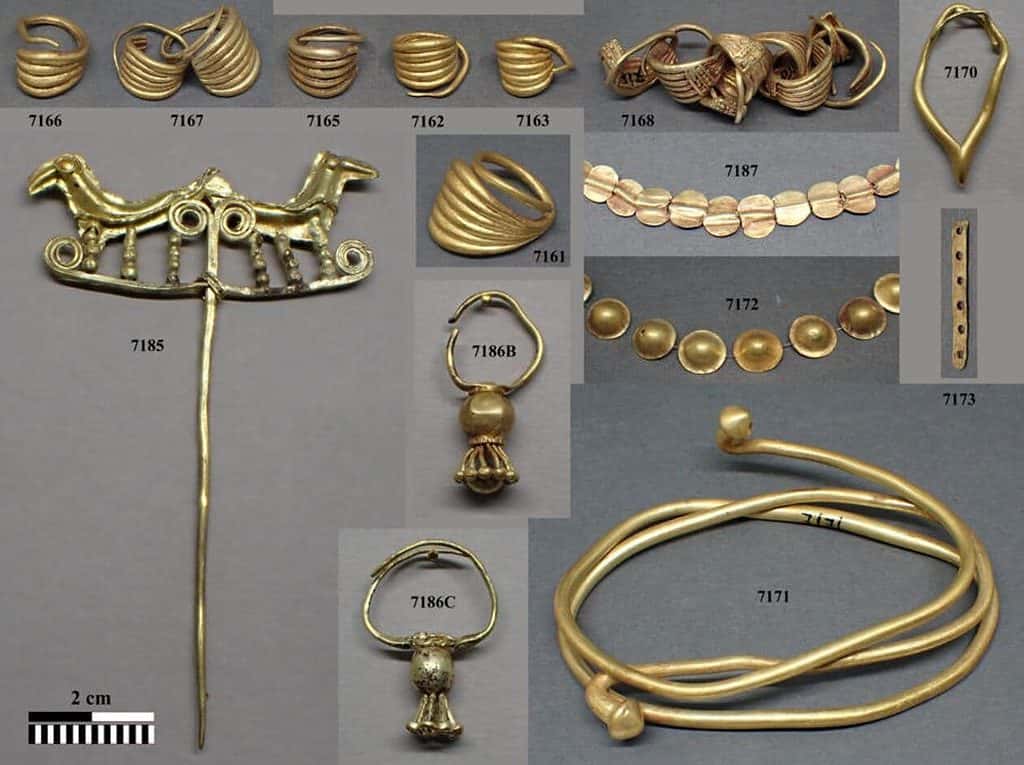It was probably an odd thing to see — a group of researchers coming into a museum with a portable measuring device, shining a laser beam on some of the most important gold objects in the history of archaeology and burning tiny holes in them. But it was all worth it as with this, they uncovered prehistoric trade routes between the cities stretching from the Aegean to the Indus.

Ernst Pernicka, scientific director of the Curt-Engelhorn Center for Archaeometry (CEZA) at the Reiss-Engelhorn Museums in Mannheim, worked with an international team of scientists to analyze samples of the Early Bronze Age jewelry from Troy and Poliochini – made possible thanks to an innovative and portable laser ablation system.
The mythical city of Troy (in present-day called Hisarlik, in Canakkale, Turkey) comprises a multi-period site, now partially buried. It was the famous setting for Homer’s Iliad (one of the oldest works of Western Literature) which tells the story of the city being sieged. Poliochini was an ancient settlement on the island of Lemos, preceding the construction of Troy I.
The gold samples analyzed by the researchers belong to the legendary “Treasure of Priam,” excavated in 1873 by the German discoverer of Troy and linguistic expert Heinrich Schliemann. Ever since it was discovered, the origin of the gold (now held in museums in Russia and Germany) has been a mystery and the subject of investigation.
Now, Pernicka and his team could finally prove that the treasure derived from secondary deposits, such as rivers, and that its chemical composition is identical to that of gold objects from Poliochni and from the royal tombs in Ur in Mesopotamia. This means there were likely trade links between these far regions, the researchers said.
Studying gold samples
For their study, the team used the portable laser ablation system to undertake minimally invasive extraction of the gold. The larger melts a small, microscopic hole in the samples, which were then analyzed for their composition using mass spectrometry. The researchers studied 61 artifacts using this method, all from the Early Bronze Age (2,500-2,000 BC).
The high concentration of palladium, zinc, and platinum in the jewelry from Troy was a clear indicator that the gold was washed out of a river in the form of gold dust. The researchers could also show that the samples were mass-produced and not as individual items. This is the only explanation, for example, of the same amount of platinum in samples found in different sites.
Meanwhile, experts have long debated the actual origin of the gold from the royal tombs of Ur. There are no natural sources of gold in Mesopotamia, which makes West Anatolia, the site of Troy, a possible source. “However, other quite different regions which are known to have had strong trade links with Ur have also been considered,” said Pernicka.
Previous studies have shown similar items used in the Early Bronze Age across a large geographic area, going from the Aegean to the Indus valley in what is now Pakistan. Gemstones such as lapis lazuli, official seals, standardized weights, and earrings with the same spiral patterns, for example. However, the exact origin of the gold from Troy still remains a mystery.
“If we observe the share of trace elements in the gold from Troy, Poliochni and Ur, Bronze Age gold from Georgia correlates the closest with the stated find sites. But we still lack data and studies from other regions and from other objects to establish this assumption,” Barbara Horejs, director of the Austrian Archaeological Institute, and one of the researchers, said in a statement.
The study was published in the Journal of Archaeological Science.






